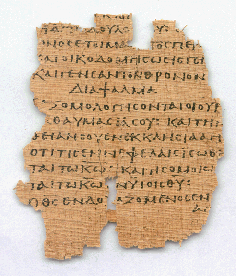Seminar at Reading Univ. (UK): GRAECO-AEGYPTIACA/AEGYPTO-GRAECA

17th to 19th September 2007
The relationship between ancient Greek writers and Egyptian literary and cultural traditions of the Greco-Roman period is emerging as an area of intense debate, stimulated both by two factors. First, there have been a series of stunning new discoveries, e.g. a demotic Egyptian text published by Kim Ryholt which is close to part of Herodotus' history of Egypt, or the demotic Book of Thoth which provides an Egyptian equivalent to the Greek Hermetica--both of which appeared in 2005; and secondly a number of new interpretations have been published, e.g. Susan Stephens Seeing Double (2003) or Jacco Dieleman's Priests, Tongues and Rites (2005).
In this context, the Classics Department at the University of Reading will host a conference on September 17-19th of 2007, with the aim of exploring the transmission and translation of literature between Egypt and the Graeco-Roman world, covering the period 700BCE-300CE. Central issues that it is hoped will be addressed include the following:
TYPES OF BILINGUAL LITERATURE. Conceived narrowly, "Greco-Egyptian literature" comprises texts that circulated in both Greek and Egyptian versions, including narratives (such as the Sesostris-novel), prophecies and magical texts; in a broader sense, it covers texts of either language which seem to engage with the texts or discourses of the other. Key questions here include: what specific texts are we talking about? And how can it be established that a relationship exists between texts of discourses of different languages or cultures? And what terms and categories are appropriate to describing such relationships? And how do they change over time?
CONTEXTS OF TRANSLATION AND PRODUCTION. When and how should we understand transmission between the cultures as taking place? Who carried out the translation? What was the role of bilingual priests (cf. e.g. P. Derchain in Revue d'Egyptologie 41 (1990) on Greek echoes in the Papyrus Jumilhac). Can the direction of the translation be determined in every case? Do texts show traces of linguistic interference or code-switching? If Egypt's relation to the Greco-Roman world in the Hellenistic and Roman periods resembles one between colony and imperial power, can the process can be illuminated by the contemporary model of postcolonial theory?
THE CONSEQUENCES OF CONTACT. What consequences for either tradition did contact with the other bring about? For example, it has been argued that contact with Greek culture may have led to radical changes in late Egyptian literature, or even to the development of entirely new forms and genres, such as the heroic narratives of the Inaros Cycle (cf. J. Quack, Die demotische und graeko-aegyptische Literatur [2005] 171-5); conversely, Manetho's Aegyptiaca has be seen as an innovative fusion between Egyptian forms of chronology and narrative and Greek historiography (cf. John Dillery, ZPE 127 [1999] 93-116).
Papers are invited which address interactions and engagements between Greek and Egyptian literature and discourse, including narrative-texts, religious texts and magic, and the underlying issues of translation and transmission. Those interested in participating should send an abstract of 300-500 words to I.C. Rutherford.
Source: D. Meadow's "Rogue Classicism"

<< Home